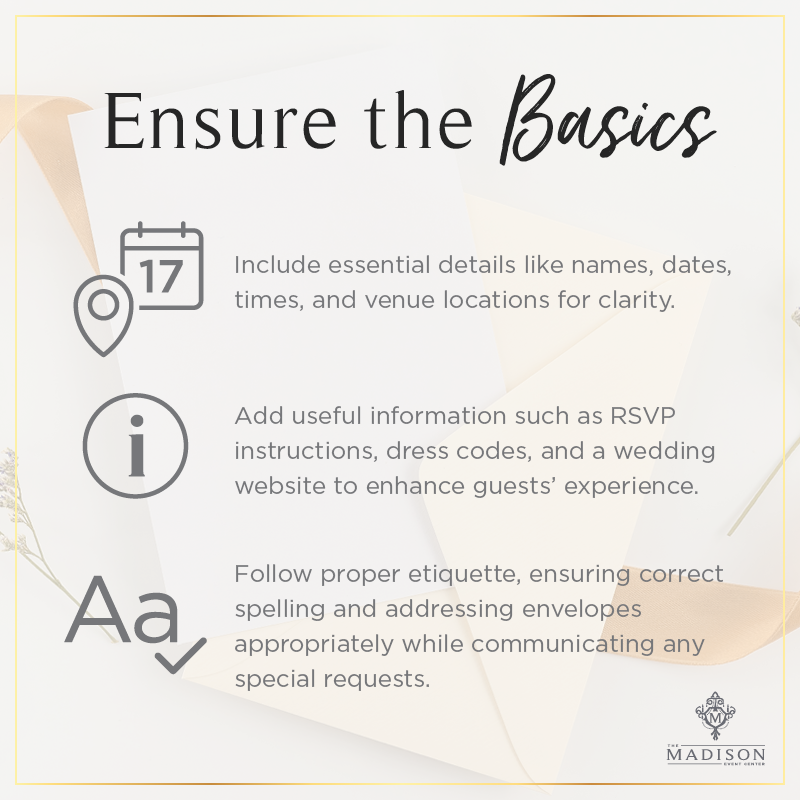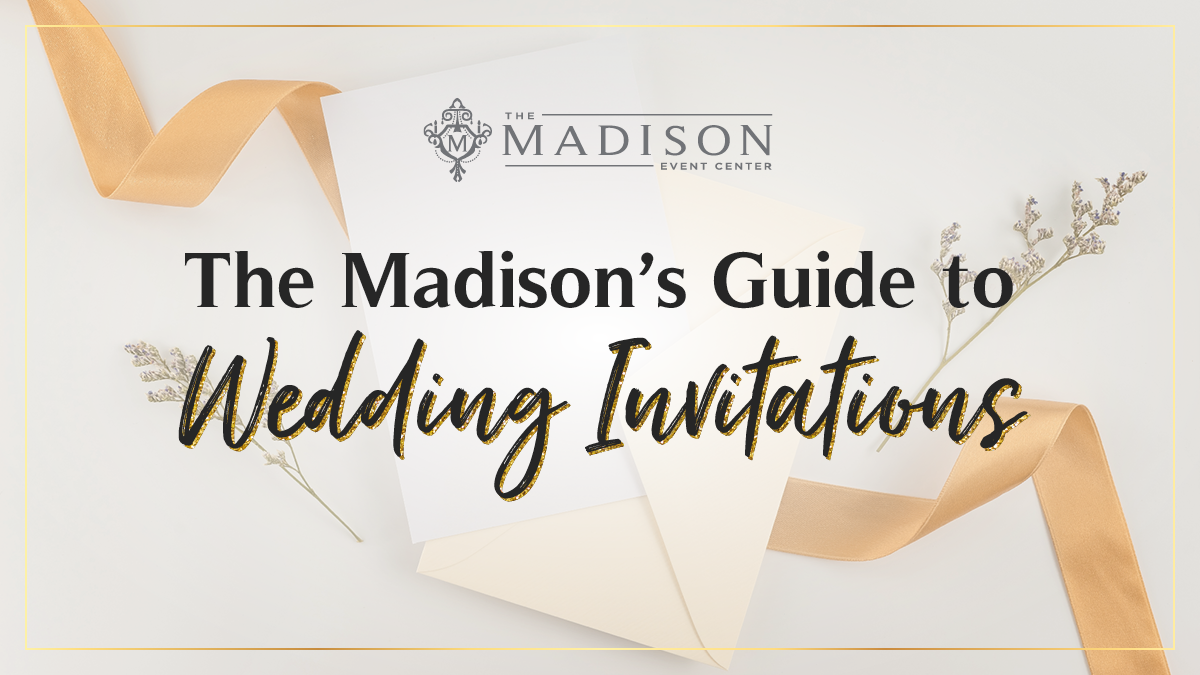Planning a wedding and unsure about what to include in your wedding invitation? This guide will help you cover all the essential details—from key information like names, dates, and venues to helpful tips on RSVP, dress code, and more. Keep reading to make sure your wedding invitations are complete, clear, and ready to impress your guests!

Key Elements Every Wedding Invitation Should Include
A wedding invitation serves as both a functional and personal piece of communication. It includes all the essential information your guests need while setting the tone for your big day. A wedding invitation suite typically includes several key components to ensure your guests are well-prepared for the celebration.
Names of the Couple
The names of the couple are the centerpiece of your invitation. Whether you opt for formal, full names or a more casual approach using first names, this decision sets the overall tone of your invitation. A formal format gives the invitation a polished, classic feel, while a more relaxed one creates a warm, informal atmosphere.
Date and Time of Ceremony
Make sure to clearly state the wedding date and time. Spell out the full date and the time in words (e.g., “four o’clock in the afternoon”), ensuring guests know when to arrive for the ceremony. This helps prevent any confusion and ensures everyone is on time.
Venue Location
Providing the full address of both the ceremony and reception venues is essential. Include street names, cities, and ZIP codes. If both events are happening at the same location, simply note it in the invitation. If they’re at different places, include a short note about the location of the reception, or, if necessary, more detailed directions.

Dress Code
Clearly indicating a dress code ensures your guests know how to dress appropriately. Whether it’s black-tie, formal, or casual, providing this detail sets expectations and helps guests feel comfortable and confident in their outfit choices.
RSVP Details
Including RSVP information is crucial for organizing your guest list. Provide a response deadline (usually three to four weeks before the wedding), space for guest names, checkboxes for attendance, and meal options if necessary. This allows you to finalize plans with an accurate headcount.
Wedding Website
If you have a wedding website, include the URL in your invitation. This is especially helpful for destination weddings or weddings with multiple events. A website can provide additional information like hotel options, event schedules, and more. It’s best to include the website link on an insert card to keep the main invitation clean and uncluttered.

Host Line Etiquette
The host line indicates who is hosting the wedding. This could be the couple, their parents, or both. If the parents are hosting, their names usually precede the couple’s names. Make sure to write the host line clearly, following the preferred format of the hosts.
Formal vs. Casual Tone
The tone of your invitation should match the tone of your event. Formal weddings generally use full names and structured language, while casual weddings might include first names and more relaxed phrasing. Your choice of wording helps set the tone for the day.
Special Requests
If you have special requests, such as no children allowed or specific instructions for gifts, make sure to include these on the invitation or wedding website. Clearly and politely stating your preferences helps guests understand what’s expected and keeps everything running smoothly.

Reception Card
If your ceremony and reception are at different locations or there’s a large gap between events, a reception card will be helpful. This card should include the name, address, and time of the reception and can also mention any special dress codes.
Directions and Map
Including a map or directions card ensures your guests can easily find the venue, especially if it’s in a remote location. Providing clear, concise directions helps reduce confusion and stress for your guests.
Accommodation Information
For out-of-town guests, an accommodations card with nearby hotel options is a thoughtful touch. Include the names, addresses, and booking details, along with any room blocks you’ve reserved for your guests.

Guest Names and Addresses
Address your invitations with full names and preferred titles to ensure formality and respect. It’s best to print names and addresses directly on the envelopes for a polished look and to save time.
Return Address
Make sure to include a return address on the back flap or top left corner of the envelope. This ensures that any undeliverable invitations can be sent back to you. Don’t forget to add a return address on the RSVP envelope as well!
Postage Considerations
To avoid mail delays, take a fully stuffed invitation to the post office to determine the correct postage. Some heavier invitations may require additional postage, so double-check to ensure you have the right amount.
Proper Etiquette and Common Mistakes to Avoid
To make sure your invitations are well-received, adhere to proper etiquette and avoid common mistakes. Double-check all spelling, order your invitations in advance, and ensure that the tone matches the formality of your event. Don’t assume guests will know the dress code if it’s not included, and keep all information clear and easy to understand.
Summary
To ensure your wedding invitation has everything it needs to be informative and appealing, include the essential details like names, dates, times, and venues, while also adding helpful touches like dress code information and RSVP instructions. These elements, along with the right tone and proper etiquette, will guarantee that your wedding invitations set the stage for a beautiful celebration.
By following these guidelines, your wedding invitations will be clear, organized, and perfectly suited to the big day, ensuring your guests are excited and prepared to join you in celebrating your special event at The Madison Event Center!

